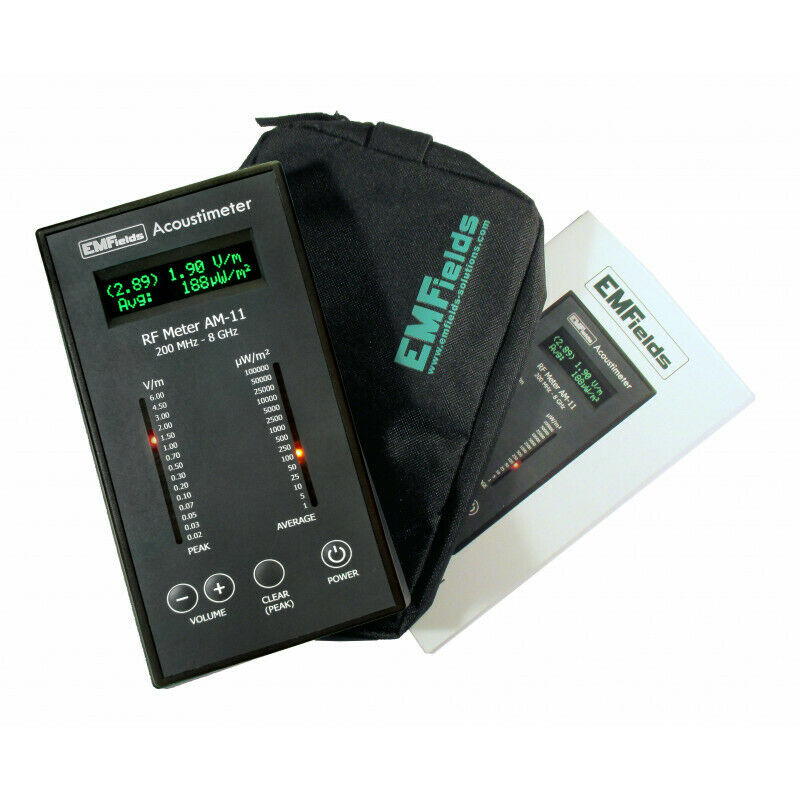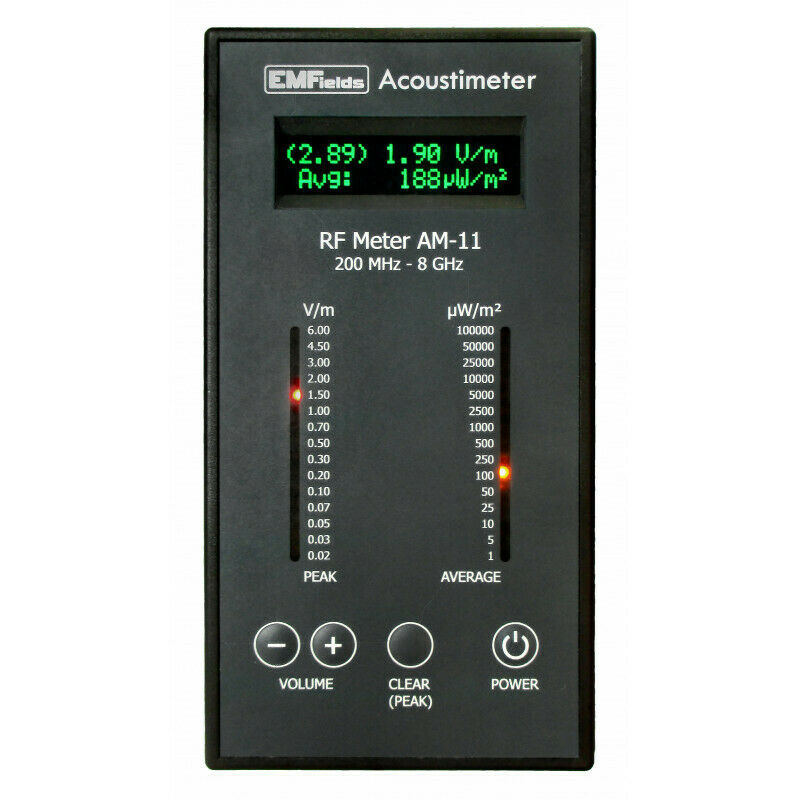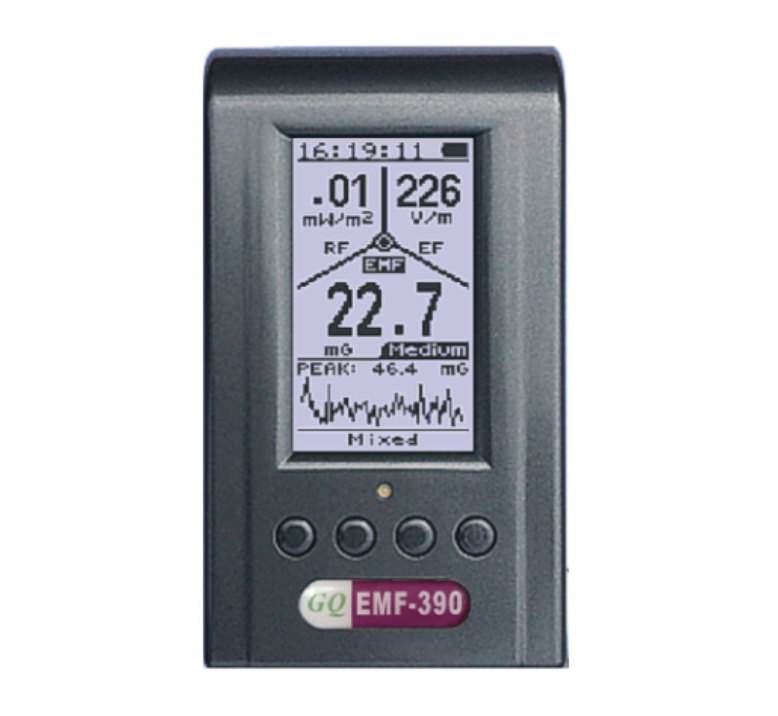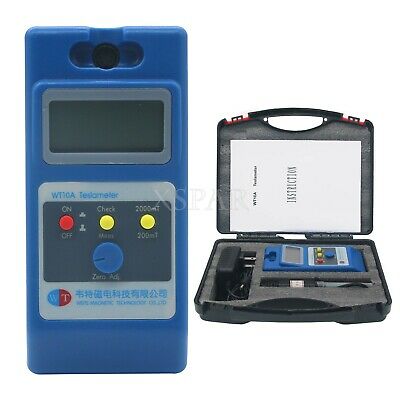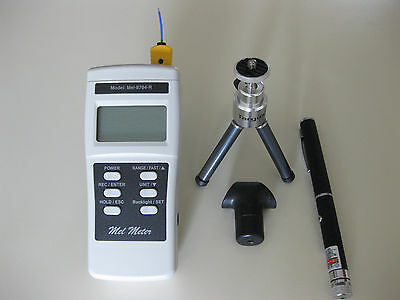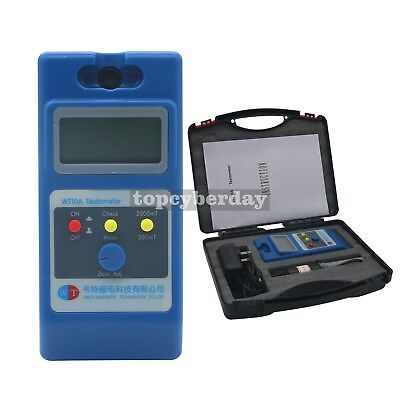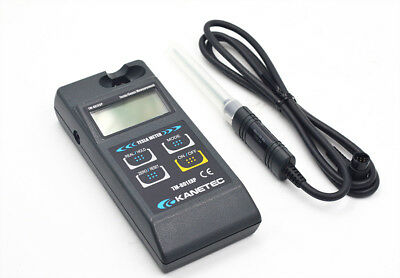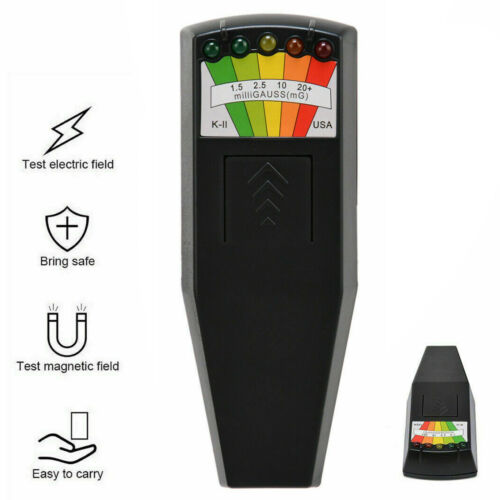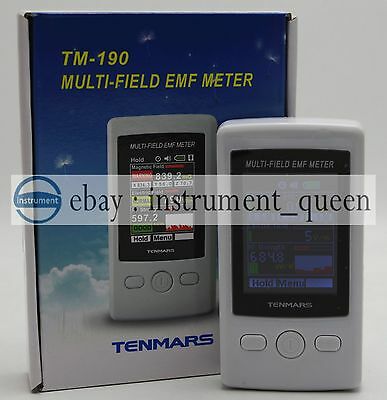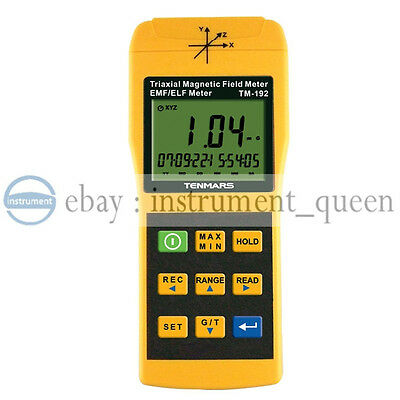-40%
RF Microwave Meter Acoustimeter AM-11 Measures Cell Phones, Towers, Bluetooth
$ 221.76
- Description
- Size Guide
Description
Acoustimeter AM-11 Microwave /Radio Frequency Meter
EMFields AM11
Our most powerful radiofrequency (RF) / microwave detector yet
Suitable for 5G measurements (see “Further Information” tab below)
Very fast response time with measurements taken thousands of times per second
Peak and average signal strength displayed on a clear LED scale
Both readings also numerically displayed on an bright “OLED” text screen
Detects mobile phones, cordless phones, smart meters, Wifi, and many other wireless devices
Suitable for those with severe electrosensitivity as it is sensitive down to 0.02 V/m
Audio output that helps determine the source of the exposure.
5 year return to base warranty
Description
The AM11 Acoustimeter is our most powerful radiofrequency (RF) / microwave detector. It measures both peak and average signals using a combination of LEDs and number readings on an bright text screen. The AM11 detects almost all modern wireless technology, including mobile phones, cordless phones, smart meters and Wifi. The instrument is suitable for those with severe electrosensitivity as it is sensitive down to 0.02 V/m. It also has an audio output that helps determine the source of the exposure.
Further Information
The Acoustimeter will help you quickly understand your RF environment. It accurately measures all incoming radiation from 200 MHz to 8000 MHz (8 GHz), and was designed using many years of real life measurement experience.
The readings are shown on both an clear “OLED” text display and two sets of LED lights. The LEDs update rapidly, helping you to find hot-spots. The text display offers high accuracy with a lower update speed, giving you time to take note of the readings. You can easily determine what kind of device is causing your exposure using the internal speaker. Audio sounds will help you identify what kind of signal your Acoustimeter is measuring. The sounds made by different devices change with time, so these are a rough guide only. If there are a number of sources of exposure, the sounds may mix and be harder to recognize.
Technical specifications
Two line OLED displaying actual levels:
— Peak exposure levels in V/m
— Peak hold levels in V/m
—
Average exposure levels in µW/m
2
Two lines of fast LEDS displaying showing:
— Peak exposure levels in V/m
—
Average exposure levels in µW/m
2
Measurement range: 200 – 8 000 MHz ±6 dB ±0.02 V/m
Sensitivity (Peak Display): 0.02 V/m – 6.00 V/m
Sensitivity (Average Display): 1 µW/m
2
– 100 000 µW/m
2
Pulsing signal may be heard through the internal speaker
Power source: 2x AA Alkaline or Rechargeable (1.2 – 1.5V)
Power draw: 100-150 mA at 3V
Battery life: 20 hours
—
Typically 15 hours on two new 1500 mAhr AA alkaline cells and
—
Typically 25 hours on two charged 2700 mAhr NIMH rechargeable cells
Size (mm): 190 x 102 x 33 (LxWxD)
Weight: 280g, excluding batteries
The Acoustimeter reads differently from some meters as:
It has a very fast response (up to over 8 GHz and reacts to very short pulses)
Peak readings are what they say – the highest sampled reading – and will react correctly to very short pulses that are regularly transmitted (such as from WiFi). The peak-hold reading on the OLED screen can be higher for some types of signal than the highest LED seen flashing as the Peak LED display does not show all the pulses in order to make it easier to see. The OLED peak-hold is the highest measured since “last cleared”. It is cleared by switching the meter off and on again, or by pressing the “CLEAR (PEAK)” button
The Average reading is a true mathematical time-averaged rolling average of thousands of samples, updated 3 times each second. This gives the correct reading for DECT and WiFi and is much lower (DECT average power is about 0.01 of the DECT pulse power) than many other instruments which use the highest peak reading and then translate that into an equivalent average power. That is not correct as power is measured as total energy used/delivered per second and not the energy in a short pulse of say 10 milliseconds followed by a 990 ms gap. It is important that we understand this as most international standards are based on true average power (actually usually averaged over 6 minutes!).
Note: The internal antenna is at the top rear of the case. Signals are best measured when the source is behind the instrument, but also quite good with the source to one or other side (particularly the left side away from the switches and volume control). It under-reads if the source is in front of the meter as the OLED display acts as an RF screen.
What’s the difference between the AM10 and the AM11?
The Acoustimeter AM11 is a direct successor to the AM10. It has the same feature set, plus an OLED display to improve readability in low-light conditions. We’ve also improved the frequency response, which is now optimised for low-band 5G (under 8 GHz) measurements.
